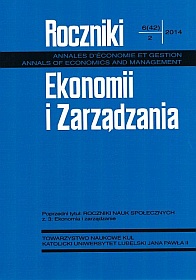Changes in Capital Structure and Turnover of the Federal Republic of Germany after World War II caused by Brand Revaluation of West German Mark (until 1985)
Abstract
Mark has become after World War II one of the leading world currencies of the capitalist world and the most important European currency. The D-Marks position reflected the place of the West Germany’s economy in the world economy. More than 5-fold increase of the GDP since 1950., productive potential and share in international turnover assured the country the place among the world’s three major economic powers.
The growing importance of the German economy was accompanied by the growing importance of the West German currency. After the 1971-73 currency crisis the D-mark turned out extremely strengthened vis-à-vis all other currencies. It became “refuge currency”, sought after and attractive for capital investments both in the period of the dollar’s crisis and during the every instance of turbulence on currency markets. The share of the D-mark in the world’s foreign exchange reserves has been systematically growing and at the end of the analyzed period this currency became one of the world’s free favorite reserve currencies. Short-lived disturbance in the D-mark appreciation vis-à-vis the U.S. dollar in the first half of 1980s, was compensated by its appreciation vis-à-vis other currencies.
References
Almekinders G.J., Eijffinger S., Daily Bundesbank and Federal Reserve intervention and the conditional variance tale in DM/$ - returns, Tilburg Univ., Tilburg 1992.
Bickerich W., Die D-Mark: Eine Bibliographie, Rowohit, Berlin 1998.
Bień A., Spadek roli dolara w międzynarodowym systemie walutowym, „Kapitalizm” 1980, nr 1, s. 123.
D-Markbilanzgesetz: Gesetzestext, Kommentierung, Gestaltungshinweise [t.1], IDW-Verlag, Düsseldorf 1990.
Drabowski E., Kryzys systemu walutowego w kapitalizmie, PWE, Warszawa 1975.
Drabowski E., Międzynarodowe stosunki ekonomiczne i finansowe, PWE, Warszawa 1979.
Fifty years of the Deutsche Mark: Central Bank and the currency In Germany Since 1948, Oxford Univ. Press, New York 1999.
Peterson P.L., The United States in the Changing World Economy, Washington 1971.
Pick’s Currency Yearbook, New York 1968, 1973.
Rączkowski S., Międzynarodowe stosunki finansowe, PWE, Warszawa 1984.
Rurarz Z., Ekspansja kapitału USA, PWE, Warszawa 1969.
Scammell W.M., International Monetary Policy: Bretton woods and after, Macmillan, London 1975.
Świdrowski J., Bretton Woods, Spółdzielnia Wydawnicza „Ingos”,Warszawa 1946.
Yeager L.B., International Monetary Relations, New York 1966.
Zabielski K., Zmiany w międzynarodowym systemie walutowym w latach 1971-1978 oraz ich wpływ na stosunki gospodarcze Wschód-Zachód. Prace Zakładu Finansów Zagranicznych, Instytut Finansów, Warszawa 1980.
Copyright (c) 2014 Roczniki Ekonomii i Zarządzania

This work is licensed under a Creative Commons Attribution-NonCommercial-NoDerivatives 4.0 International License.


